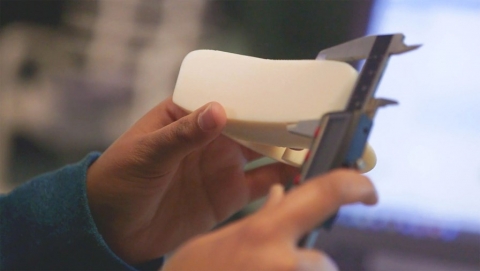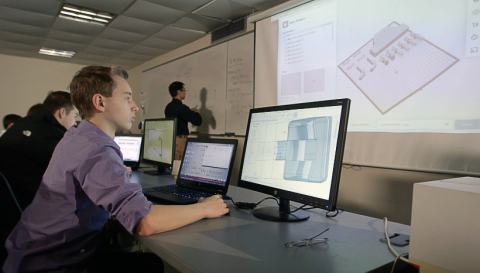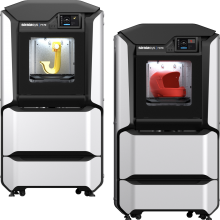Students gain high-demand skills with 3D printing at Dunwoody College of Technology.
3D printing accelerates the lesson, focusing students on design and engineering.
Technical education gets rounded out with the addition of 3D printing.
Dunwoody College of Technology (Dunwoody) was founded in Minneapolis, Minnesota in 1914 with the vision to provide a rigorous, industry-focused technical education. As the oldest and only non-profit technical college in the region, Dunwoody has garnered an international reputation for its successful curriculum of hands-on, applied learning. 3D printing is a key part of that curriculum. Students learn critical thinking along with practical, high-demand skills. “In the last three years, there has been a huge momentum increase in 3D printing at Dunwoody and students want programs centered on it,” said E.J. Daigle, Dunwoody’s Dean of Robotics & Manufacturing.
"These models give us the best opportunity to re-create human physiologic conditions." - Alex Wong, drafting and design instructor, Dunwoody College of Technology
Learning to leverage 3D printing.
For students in the Engineering Drafting & Design program, applying these sought-after skills also involves extensive practical experience on the college’s 3D printers. “Students spend their first year learning the basics of (blue)print reading and SolidWorks software,” said Alex Wong, the engineering, drafting, and design instructor. “In the second year, we get into application problems, and we do a lot of 3D printing where students use real-world applications to solve design problems and create new products.” Hands-on coursework includes weed whip and golf putter design projects that teach students manufacturing processes. Students also learn how to leverage 3D printing during product development by verifying concepts, validating designs, and testing.
“During the weed whip project, one team of students designed their prototype with a handguard,” Wong said. “Their CAD model looked good, but when they 3D printed it and held it in their hand, they found it was too small and not user-friendly. But with our 3D printers, they were able to make a quick design change.” The golf putter design project, streamlined with Dunwoody’s 3D printers, pushes students to research, innovate and refine concepts within the strict parameters of the United States Golf Association. “Without a 3D printer, the lesson would have to be executed using hand-cut wood models,” said Wong. “3D printing accelerates the lesson, focusing students on the design and engineering rather than personal craftsmanship. And students can use more complex geometry and curves because they are not limited to what they can do with subtractive methods and hand tools.”
Refining concepts and shaping futures.
3D printing lets students adjust their concepts at every step of product development. This accelerates the process and teaches students how to be successful with technology continually advancing speed, accuracy, and reliability. But not just any printer will do. Colleges like Dunwoody look for printers that are easy to use and give professional results. Speed, reliability, and economy are other important factors because the printers serve many students daily. To meet these requirements and the growing demand, Dunwoody bought a Stratasys F370 3D Printer. “The speed of the Stratasys F370 is a big benefit,” Wong said. “It’s intuitive to work on, and the graphical 3D preview of GrabCAD Print™ helps students diagnose problem areas like thin walls and correct toolpath issues before printing.”
The Stratasys F370 is easy to operate, and its material capability is a feature both the students and instructors are excited about. “Before, we were limited to only ABS, but now we can print in ASA, in color, or use the fast and cheap PLA,” said Wong. “The ability to choose the material to match the project requirements is great.”
At Dunwoody, 3D printing is more than just exposing students to prototyping. It’s a cost-effective and powerful tool that gives students the problem-solving skills needed to make them assets in the job market.






